NetSuite is a popular ERP platform used by nearly 40,000 companies worldwide, according to Enlyft. Its feature-rich functionality covering manufacturing, supply chain, HR, finance, and other business aspects is a key reason for adoption. As a cloud-native platform, Netsuite also integrates smoothly with corporate applications and third-party solutions, such as Google Workspace and Salesforce, which contributes to its popularity.
However, to reap all the benefits NetSuite offers, its adopters need significant investment, as the solution is rather expensive compared to many other ERP on the market. Fortunately, there are ways for companies to optimize NetSuite implementation costs, thereby making its adoption more affordable.
In this article, NetSuite consultants from Itransition overview NetSuite cost factors and provide some recommendations for reducing implementation costs.
What are the cost factors for NetSuite implementation?
The key factors that shape the total NetSuite ERP implementation cost are:
Core and extra platform functionality
Functionality is one the primary factors determining the cost of NetSuite implementation. A company can gain access to core ERP and CRM functionality by purchasing any NetSuite edition, as these modules are provided by default. NetSuite ERP module includes inventory, warehouse, and financial management capabilities, while NetSuite CRM module comes with marketing automation, order management, and sales forecasting.
If a company needs functionality beyond the default NetSuite offering, such as industry-specific features, it will have to purchase additional NetSuite modules, incuring extra costs. These modules are usually grouped in bundles — Manufacturing Edition, Nonprofit Edition, and Healthcare Edition are some examples.
Software configuration and customization
Alternatively, if a company requires functionality that is not available out-the-box, it can configure the platform by using no-code SuiteFlow tools to create and set up custom NetSuite workflows. However, to fully customize NetSuite to its needs, a company may have to hire developers who’ll use the SuiteScript platform and build custom workflows from scratch via JavaScript, which also incurs additional costs.
Number of users
As mentioned above, NetSuite offers several editions, each coming at a different price. Companies should choose one depending on their business sizes and number of user licenses they require:
- NetSuite Starter/Limited Edition — includes 10 user licenses, so it’s better suited for small businesses (10 to 50 employees).
- NetSuite Mid-Market Edition — provides user licenses for 11-1000 employees.
- NetSuite Enterprise Edition — includes 1000+ NetSuite user licenses.
- NetSuite Premium Edition — provides unlimited licenses, so it better suits large companies and enterprises.
File storage and transaction limit
Besides the preferred NetSuite edition, the adoption cost also depends on the choice of one or another NetSuite Service Tier, which determines available file storage and monthly transaction limit. NetSuite offers four Service Tiers:
- Standard — 100 GB file storage, 200,000 monthly transaction limit
- Premium — 1,000 GB file storage, 2,000,000 monthly transaction limit
- Enterprise — 2,000 GB file storage, 10,000,000 monthly transaction limit
- Ultimate — 4,000 GB file storage, 50,000,000 monthly transaction limit
Integration scope and integration approaches
The number of NetSuite integrations with other business systems also influences the total implementation cost, with the more integrations required, the higher implementation costs. Along with the number of integrations, selected integration approaches also impact the final NetSuite implementation cost.
For example, a company can connect NetSuite to other corporate software using built-in connectors, which require no coding skills and therefore can be executed by specialists without extensive technical expertise. Integrations with legacy systems usually require developing custom connectors from scratch, which is more complex and expensive.
User training
While NetSuite provides free training materials and user guides, both in the form of articles and video tutorials, training employees still requires some financial investment. For example, if employees need specific expertise to use NetSuite efficiently, a company may need to purchase paid courses, such as those provided by Udemi that can cost up to $100 per employee.
Alternatively, a company can opt for user support services from a licensed NetSuite partner. While this type of training can be quite expensive, it helps provide employees with in-depth knowledge of NetSuite quickly. For example, licensed partners can execute role-based training to educate employees depending on their user roles – system administrators and regular or advanced users.
Project team composition
The company will need an IT team to implement the NetSuite platform, and team composition is another important cost factor. The skillset of the project team depends on the scope and scale of the project, for instance, whether extensive NetSuite customizations are required or if comprehensive data migration is performed.
3 recommendations to cut NetSuite implementation costs
1. Prioritize only necessary NetSuite functionality
Since the cost of NetSuite adoption directly depends on the functional scope of the solution, the company needs to prioritize ERP capabilities based on operational and strategic business needs. This can help understand which features are most important and should be implemented in the first place.
Once a company’s needs are identified, decision-makers should carefully explore the NetSuite functionality. Each NetSuite module has its own set of features, so it’s critical to understand what each offers.
Decision-makers can explore the NetSuite functionality and even t use the platform’s trial version to better understand its capabilities. Many licensed partners also offer NetSuite trial accounts for a small fee or free of charge. These typically provided access to core and optional NetSuite capabilities included in OneWorld, Advanced Inventory, Fixed Assets Management, and other modules.
Business analysis and research of the NetSuite functionality can help decision-makers determine whether the core functionality of NetSuite is enough or if additional NetSuite capabilities are required. After a company implements NetSuite with the minimum possible investment and covers its most critical needs, it can purchase additional functionality later on.
2. Streamlining customization and integration processes
As mentioned earlier, a company can tailor NetSuite to its needs by configuring or customizing the ERP system. While customization can bring more advantages to a company, it is also more expensive. Increased IT labor cost is one of the key factors here, as the company has to pay for developers’ work.
If customization cannot be avoided, the company should optimize this process to make it less labor-consuming and more cost-effective. For instance, the company can reduce the costs associated with customization testing using automated testing tools. Testing automation enables companies to speed up routine and time-consuming QA tasks and reduce IT labor cost.
Also, if pre-built connectors provided by NetSuite can not cover a company’s integration requirements, it will have to build custom connectors from scratch. Although creating custom integrations can be expensive as well, companies can still make it more affordable by increasing its speed and efficiency.
One of the ways to streamline the integration process is to use Oracle’s Project Integration Framework, a platform available in Oracle Cloud Infrastructure as a SaaS application. Working as a centralized integration hub, it allows teams to quickly create and easily manage integrations between Oracle solutions and third-party software.
3. Involving third-party NetSuite experts in the implementation
Assembling a team to implement NetSuite can be too difficult and expensive for a company if it lacks the necessary in-house expertise since it can take months or even years.
In such a case, outsourcing NetSuite experts can be a more cost-effective option. If a company requires a wide range of skills that are difficult to cover with augmentation, it can hire an external team of NetSuite experts. Such a team can perform the entire implementation end-to-end, including deployment, integration, and ERP customization.
Final thoughts
NetSuite is a popular ERP solution that helps companies manage and improve various aspects of their businesses, from accounting and logistics to manufacturing and customer relationship management. Although the use of NetSuite enables companies to perform better and thus become more competitive, the adoption of this ERP platform can be costly.
The good news is that companies can mitigate multiple adoption costs and thus make NetSuite more affordable. For example, instead of spending resources on building an in-house IT team, a company can delegate the implementation project to third-party NetSuite experts and thus ensure more cost-efficient and smooth ERP adoption.



























